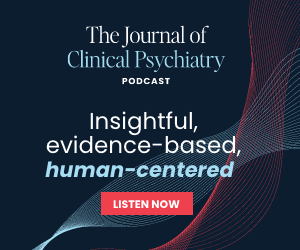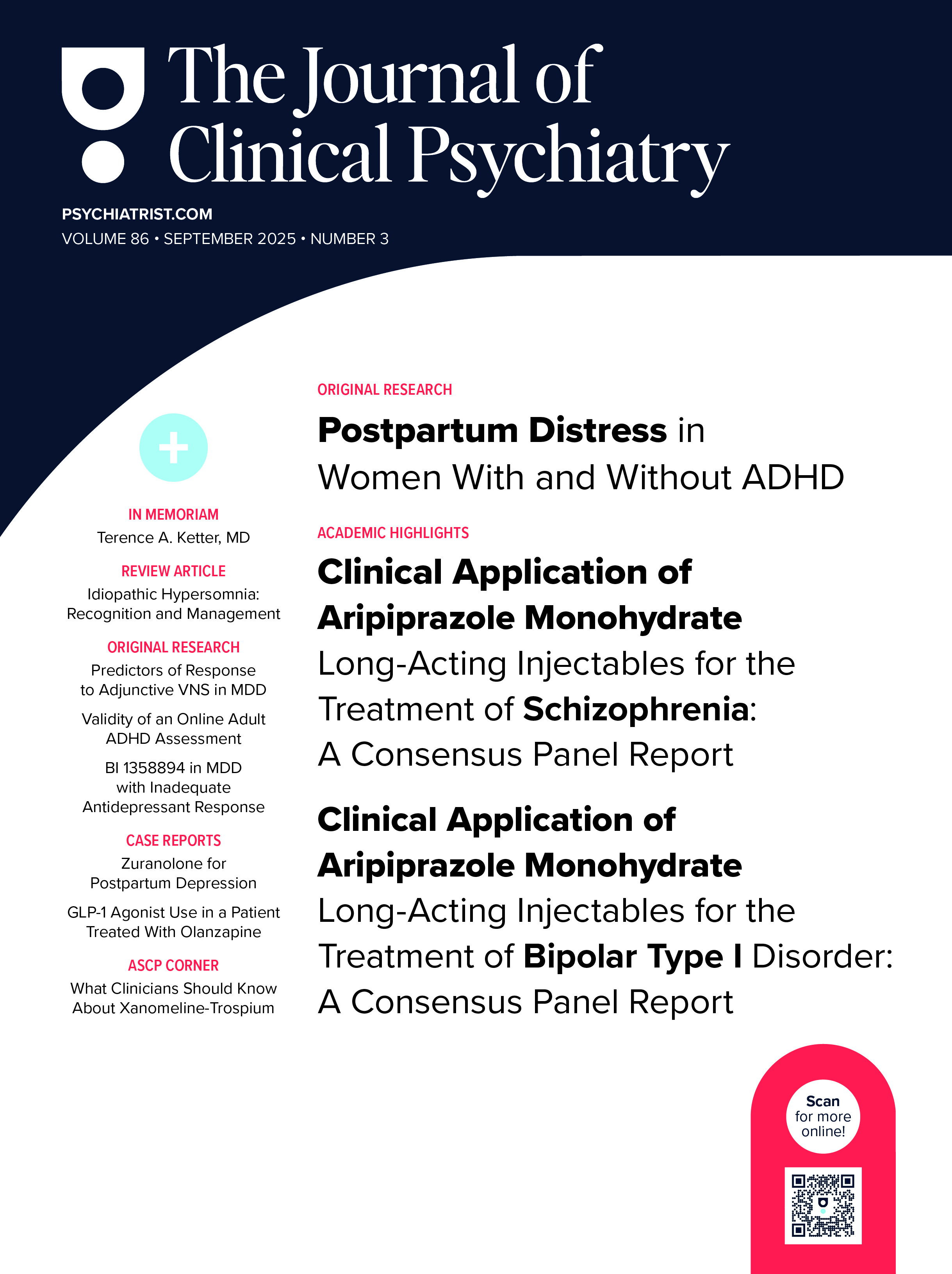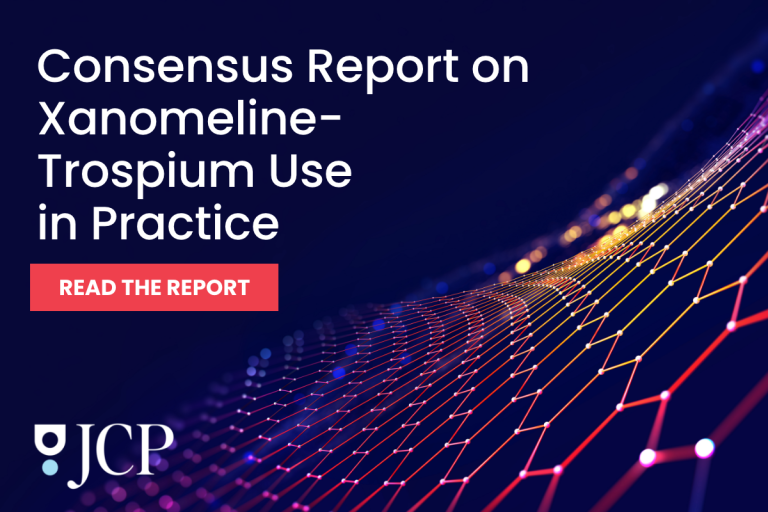Abstract
Objective: In treatment-resistant depression (TRD), augmentation with aripiprazole (A-ARI) or combination therapy by adding bupropion (C-BUP) has been reported as more effective than switching to bupropion (S-BUP), but C-BUP risks falls in older adults, and A-ARI risks weight gain and tardive dyskinesia (TD). The aim of this study was to clarify whether the enhanced effectiveness outweighs such risks.
Methods: In this risk-benefit decision analysis, lifetime quality-adjusted life-years (QALYs) following 1 year of A-ARI or C-BUP vs S-BUP treatment were simulated in a health-state transition model tracking depression remission, falls, weight gain, and TD, in age and baseline body mass index (BMI) subgroups, using data from the VAST-D and OPTIMUM trials and other literature. QALYs were converted to depression-free day-equivalents (DFDs), the QALYs gained from 1 day of remitted versus active depression.
Results: Simulated adults aged 18–64 years experienced a net benefit of C-BUP over S-BUP of 20.7 DFDs, equivalent to about 3 weeks of faster remission of depressive symptoms. In older adults, especially those aged 85+ years, this benefit over S-BUP was partially but not fully offset by a risk of falls. In adults aged 18–64 years, A-ARI was estimated to offer only 8.0 DFDs after subtracting the expected harms from TD, and this was further reduced to −22.8 DFDs once metabolic harms were considered, in those overweight at baseline. Overall, C-BUP was preferred over A-ARI in all subgroups except ages 85–89 years with BMI<25, in whom A-ARI was preferred.
Conclusion: In our model, C-BUP better balanced efficacy and tolerability in TRD in adults under 85 years than did S-BUP or A-ARI. A-ARI was least-preferred in overweight adults. These results may inform shared decision-making and clinical guidelines.
J Clin Psychiatry 2025;86(4):25m15863
Author affiliations are listed at the end of this article.
Members Only Content
This full article is available exclusively to Professional tier members. Subscribe now to unlock the HTML version and gain unlimited access to our entire library plus all PDFs. If you’re already a subscriber, please log in below to continue reading.
References (52)

- Gaynes BN, Lux L, Gartlehner G, et al. Defining treatment-resistant depression. Depress Anxiety. 2020;37(2):134–145. PubMed CrossRef
- Zhdanava M, Pilon D, Ghelerter I, et al. The prevalence and national burden of treatment-resistant depression and major depressive disorder in the United States. J Clin Psychiatry. 2021;82(2):20m13699. PubMed CrossRef
- Hantouche E, Angst J, Azorin JM. Explained factors of suicide attempts in major depression. J Affect Disord. 2010;127(1-3):305–308. PubMed CrossRef
- Dunner DL, Rush AJ, Russell JM, et al. Prospective, long-term, multicenter study of the naturalistic outcomes of patients with treatment-resistant depression. J Clin Psychiatry. 2006;67(5):688–695. PubMed CrossRef
- Fekadu A, Wooderson SC, Markopoulo K, et al. What happens to patients with treatment-resistant depression? A systematic review of medium to long term outcome studies. J Affect Disord. 2009;116(1–2):4–11. PubMed CrossRef
- Johnston KM, Powell LC, Anderson IM, et al. The burden of treatment-resistant depression: a systematic review of the economic and quality of life literature. J Affect Disord. 2019;242:195–210. PubMed CrossRef
- The National Institute for Health and Care Excellence. Depression in Adults: Treatment and Management. NICE; 2022. https://www.nice.org.uk/guidance/ Accessed September 30, 2024.
- Gelenberg AJ, Freeman MP, Markowitz JC, et al. American Psychiatric Association Practice Guideline for the Treatment of Patients With Major Depressive Disorder, Third Edition. Am J Psychiatry. 2010;167(suppl):1–152. PubMed
- McQuaid JR, Buelt A, Capaldi V, et al. The management of major depressive disorder: synopsis of the 2022 U.S. Department of Veterans Affairs and U.S. Department of Defense Clinical Practice Guideline. Ann Intern Med. 2022;175(10):1440–1451. PubMed CrossRef
- Mohamed S, Johnson GR, Chen P, et al. Effect of antidepressant switching vs augmentation on remission among patients with major depressive disorder unresponsive to antidepressant treatment: the VAST-D randomized clinical trial. JAMA. 2017;318(2):132–145. PubMed CrossRef
- Lenze EJ, Mulsant BH, Roose SP, et al. Antidepressant augmentation versus switch in treatment-resistant geriatric depression. N Engl J Med. 2023;388(12):1067–1079. PubMed CrossRef
- Kenny RA, Romero-Ortuno R, Kumar P. Falls in older adults. Medicine. 2017;45(1):28–33.
- Haslam DW, James WPT. Obesity. Lancet. 2005;366(9492):1197–1209. PubMed CrossRef
- Speyer H, Westergaard C, Albert N, et al. Reversibility of antipsychotic-induced weight gain: a systematic review and meta-analysis. Front Endocrinol. 2021;12:577919. PubMed CrossRef
- Kiriakakis V, Bhatia KP, Quinn NP, et al. The natural history of tardive dystonia. A long-term follow-up study of 107 cases. Brain. 1998;121(11):2053–2066. PubMed
- Caroff SN, Yeomans K, Lenderking WR, et al. RE-KINECT: a prospective Study of the presence and healthcare burden of tardive Dyskinesia in clinical practice settings. J Clin Psychopharmacol. 2020;40(3):259–268. PubMed CrossRef
- Yoon J, Zisook S, Park A, et al. Comparing cost-effectiveness of aripiprazole augmentation with other “Next-Step” depression treatment strategies: a randomized clinical trial. J Clin Psychiatry. 2018;80(1):18m12294. PubMed CrossRef
- Garrison LP, Towse A, Bresnahan BW. Assessing A structured, quantitative health outcomes approach to drug risk-benefit analysis. Health Aff. 2007;26(3):684–695. PubMed CrossRef
- Ramani SV, Richard A. Decision, irreversibility and flexibility: the irreversibility effect re-examined. Theor Decis. 1993;35(3):259–276. CrossRef
- Husereau D, Drummond M, Augustovski F, et al. Consolidated Health Economic Evaluation Reporting Standards 2022 (CHEERS 2022) Statement: Updated Reporting Guidance for Health Economic Evaluations. Society for Medical Decision Making; 2022. https://journals.sagepub.com/doi/full/10.1177/ Accessed October 17, 2024
- Meyerson W, Ross E, Kennedy C, et al. Appendix for aripiprazole or bupropion augmentation vs switching to bupropion in treatment resistant depression. 2025. https://osf.io/6czyp/. Accessed May 16, 2025
- Zisook S, Johnson GR, Hicks P, et al. Continuation phase treatment outcomes for switching, combining, or augmenting strategies for treatment-resistant major depressive disorder: a VAST-D report. Depress Anxiety. 2021;38(2):185–195. PubMed CrossRef
- Bhaskaran K, Dos-Santos-Silva I, Leon DA, et al. Association of BMI with overall and cause-specific mortality: a population-based cohort study of 3.6 million adults in the UK. Lancet Diabetes Endocrinol. 2018;6(12):944–953. PubMed CrossRef
- Incerti D, Jansen JP. hesim: Health Economic Simulation Modeling and Decision Analysis. 2021. doi:10.48550/arXiv.2102.09437 CrossRef
- Attema AE, Brouwer WBF, Claxton K. Discounting in economic evaluations. Pharmacoeconomics. 2018;36(7):745–758. PubMed CrossRef
- Carbon M, Kane JM, Leucht S, et al. Tardive dyskinesia risk with first-and second-generation antipsychotics in comparative randomized controlled trials: a meta-analysis. World Psychiatry. 2018;17(3):330–340. PubMed CrossRef
- Morgenstern H, Glazer WM. Identifying risk factors for tardive Dyskinesia among long-term outpatients maintained with neuroleptic medications: results of the Yale Tardive Dyskinesia Study. Arch Gen Psychiatry. 1993;50(9):723–733. PubMed CrossRef
- Woerner MG, Alvir JMJ, Saltz BL, et al. Prospective Study of tardive Dyskinesia in the elderly: rates and risk factors. Aust J Pharm. 1998;155(11):1521–1528. PubMed CrossRef
- Tarsy D, Lungu C, Baldessarini RJ. Epidemiology of tardive dyskinesia before and during the era of modern antipsychotic drugs. Handb Clin Neurol. 2011;100:601–616. PubMed CrossRef
- Centers for Disease Control and Prevention. Web-based Injury Statistics Query and Reporting System (WISQARS): CDC’s National Center for Injury Prevention and Control. 2002. Accessed October 17, 2024. https://www.cdc.gov/injury/wisqars.
- Tanner CM, Caroff SN, Cutler AJ, et al. Impact of possible tardive dyskinesia on physical wellness and social functioning: results from the real-world RE-KINECT study. J Patient-Rep Outcomes. 2023;7(1):21. PubMed CrossRef
- Ayyagari R, Goldschmidt D, Zhou M, et al. Defining utility values for patients with tardive dyskinesia. Curr Med Res Opin. 2022;38(3):401–407. PubMed CrossRef
- McEvoy J, Gandhi SK, Rizio AA, et al. Effect of tardive dyskinesia on quality of life in patients with bipolar disorder, major depressive disorder, and schizophrenia. Qual Life Res. 2019;28(12):3303–3312. PubMed CrossRef
- Judd LL, Akiskal HS, Maser JD, et al. A prospective 12-year study of subsyndromal and syndromal depressive symptoms in unipolar major depressive disorders. Arch Gen Psychiatry. 1998;55(8):694–700. PubMed CrossRef
- Mohiuddin S, Payne K. Utility Values for Adults with Unipolar Depression: Systematic Review and Meta-Analysis. Med Decis Mak Int J Soc Med Decis Mak. 2014;34(5):666–685. PubMed CrossRef
- Revicki DA, Wood M. Patient-assigned health state utilities for depression-related outcomes: differences by depression severity and antidepressant medications. J Affect Disord. 1998;48(1):25–36. PubMed CrossRef
- Si L, Winzenberg TM, de Graaff B, Palmer AJ. A systematic review and meta-analysis of utility-based quality of life for osteoporosis-related conditions. Osteoporos Int J Establ Result Coop Eur Found Osteoporos Natl Osteoporos Found USA. 2014;25(8):1987–1997. PubMed CrossRef
- Ul-Haq Z, Mackay DF, Fenwick E, Pell JP. Meta-analysis of the association between body mass index and health-related quality of life among adults, assessed by the SF-36. Obes Silver Spring Md. 2013;21(3):E322-E327
- Ross EL, Zivin K, Maixner DF. Cost-effectiveness of electroconvulsive therapy vs pharmacotherapy/psychotherapy for treatment-resistant depression in the United States. JAMA psychiatry. 2018;75(7):713–722. PubMed CrossRef
- Nuñez NA, Joseph B, Pahwa M, et al. Augmentation strategies for treatment resistant major depression: a systematic review and network meta-analysis. J Affect Disord. 2022;302:385–400. PubMed
- Cheon EJ, Lee KH, Park YW, et al. Comparison of the efficacy and safety of aripiprazole versus bupropion augmentation in patients with major depressive disorder unresponsive to selective serotonin reuptake inhibitors: a randomized, prospective, open-label Study. J Clin Psychopharmacol. 2017;37(2):193–199. PubMed CrossRef
- Berman RM, Thase ME, Trivedi MH, et al. Long-term safety and tolerability of open-label aripiprazole augmentation of antidepressant therapy in major depressive disorder. Neuropsychiatr Dis Treat. 2011;7:303–312. PubMed CrossRef
- Barton BB, Segger F, Fischer K, et al. Update on weight-gain caused by antipsychotics: a systematic review and meta-analysis. Expert Opin Drug Saf. 2020;19(3):295–314. PubMed CrossRef
- Joo JH, Lenze EJ, Mulsant BH, et al. Risk factors for falls during treatment of late-life depression. J Clin Psychiatry. 2002;63(10):936–941. PubMed CrossRef
- Jang SN, Cho SI, Oh SW, et al. Time since falling and fear of falling among community-dwelling elderly. Int Psychogeriatr. 2007;19(6):1072–1083. PubMed CrossRef
- Katsoulis M, Lai AG, Diaz-Ordaz K, et al. Identifying adults at high-risk for change in weight and BMI in England: a longitudinal, large-scale, population-based cohort study using electronic health records. Lancet Diabetes Endocrinol. 2021;9(10):681–694. PubMed CrossRef
- Leucht S, Cipriani A, Spineli L, et al. Comparative efficacy and tolerability of 15 antipsychotic drugs in schizophrenia: a multiple-treatments meta-analysis. Lancet. 2013;382(9896):951–962. PubMed CrossRef
- Rhee TG, Mohamed S, Rosenheck RA. Antipsychotic prescriptions among adults with major depressive disorder in office-based outpatient settings: national trends from 2006 to 2015. J Clin Psychiatry. 2018;79(2):17m11970. PubMed CrossRef
- Gerhard T, Akincigil A, Correll CU, et al. National trends in second generation antipsychotic augmentation for non-psychotic depression. J Clin Psychiatry. 2014;75(5):490–497. PubMed CrossRef
- Wang Y, Beydoun MA, Min J, et al. Has the prevalence of overweight, obesity and central obesity levelled off in the United States? trends, patterns, disparities, and future projections for the obesity epidemic. Int J Epidemiol. 2020;49(3):810–823. PubMed CrossRef
- Luppino FS, de Wit LM, Bouvy PF, et al. Overweight, obesity, and depression: a systematic review and meta-analysis of longitudinal studies. Arch Gen Psychiatry. 2010;67(3):220–229. PubMed CrossRef
- Fava M. Lessons learned from the VA Augmentation and Switching Treatments for Improving Depression Outcomes (VAST-D) Study. JAMA. 2017;318(2):126–128. PubMed CrossRef






